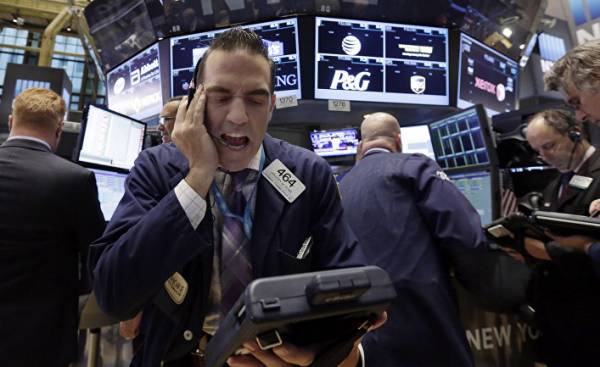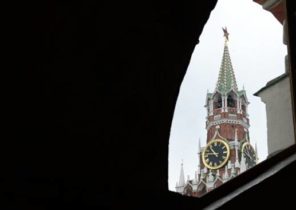
In January 2007, the action was still worth an impressive $ 30. Then the rate has deteriorated, and in the end could only mean one thing. In March, finally broke through all the dams. New Century Financial was removed from the auction. Finally, on 2 April 2007 the second largest special financial institution of the USA real estate was forced to declare bankruptcy.
Even before the second number in the industry were forced to give up several smaller mortgage companies, and bankruptcy of New Century most were unknown. The company specialized in financing buyers with poor credit standing, the so-called subprime loans.
Influential people such as the Minister of Finance of the USA Henry Paulson (Henry Paulson), was not tired to underline that the worst is behind us and that the rest are already safe or can be protected. Was wrong not only former Manager of Goldman Sachs. What none of the experts imagined or wanted to say is that a collapse of the 2 April 2007 was not only a symptom of difficulties in this segment of the American housing market, but also the evil omen of the financial crisis.
Eighteen months after the collapse of investment Bank Lehman Brothers became clear in the financial industry, the largest outbreak of the global economic crisis since the 1930-ies. It began on the same day, April 2, ten years ago. And although since then the world learned a lot about financial systems and management, such a violent collapse can happen again.
A small event, huge distortions
The fall of New Century Financial has demonstrated the insidious properties of financial crises. Small events provoke huge distortions. Pathogens can be recognized only after a long time. In the fog of what is happening, much remains unclear. The history of major crises shows, moreover, that it is often implied detail predicting the next disaster.
And it always happens. The next crisis will come necessarily. Why historians warn against carelessness, which the decision-makers, soothes deceptive security. For example, historians criticized players in the market, which has taught little past the financial world on fire. Obviously, people are doomed again and again to make the same mistakes. Everything is complicated by the fact that following the crisis in most cases comes with a completely different, unexpected direction.
“No one should pretend that regulation, which has been organized since 2008 on both sides of the Atlantic, will make the financial system more stable,” says NiAl Ferguson (Niall Ferguson), a historian at the elite Harvard University, USA, in an interview with Welt am Sonntag. On the contrary. Although with the new laws and regulations banks are forced to create a more robust capital reserves. However, according to him, over-regulation would significantly increase the complexity in the financial system. “In addition, much continues to operate in the same way as before, for example, the rating agencies, derivatized markets and exorbitant debt,” warns Ferguson.
Even a minimal loss would mean the end
Banks, rating agencies, derivatives — in 2007, many were still not clear how all of these players and financial structures are linked. And what self-defeating dynamics of this system could develop in case of an unexpected explosion.
When in April 2007, New Century declared bankruptcy, the company issued 1.4 million of mortgage loans for a total amount of 225 billion dollars. The cashier, on the contrary, there was a cash for $ 60 million. Even the slightest loss that could occur as a result of the proliferation of nonpayment, would mean the collapse of the company.
However, this principle has not been limited only to New Century Financial. Following the idea of developing new financial instruments, experts are compelled not only to institutions on financing of real estate, but also banks and insurance companies that promised equity should be as low as possible. Ultimately it was considered almost a law that real estate prices will continue to grow and all the risks you can calculate and thereby control them.
The risks were unclear
It should be added that part of the requirements was tied up in packages and sold on. These packages of risk demand in the capital market. So all the major firms on wall street and in almost the entire Western financial system down to the German land banks were indirectly involved in real estate transactions. And seemingly manageable risk one was based on the fact that the other your risk is kept under control.
In this system did not include the loss of one of the major players. Because after the distribution, packaging and labelling was rarely clear which one the risk to the books. In the end even the top-managers of financial corporations were not able to understand what was behind the so-called securitizations.
The decision-makers, reassuring themselves and others that the famous rating agencies all of these securitization appreciated. If the Agency awarded the best rating of AAA, which happened not so seldom, that banks have been able to sleep peacefully.
When the system became unstable, fell first, the institutions that are put directly on the real estate market and transferred to the next property. And the crisis went in a circle. The first known banks suffered by Bear Stearns on wall street. It was in March 2008.
Problems pushed into the balance sheet of banks of issue
In June 2007, stumbled two investment funds of Bear Stearns Hedgefonds, but their loss rich in tradition, the Bank was able to survive. After three quarters of the year a thin layer of capital spent. At the insistence of the U.S. Treasury Department and the Federal reserve system (Fed) was invented by a fast initial decision. For Bear Stearns stood up a major U.S. Bank, J. P. Morgan, one of the risks adopted Federally reserve. In the future, and many other Central banks will take the risk to protect the financial system from collapse.
“Many of the problems were just pushed into a balance of equity of banks”, — says a former chief economist at Merrill Lynch David Rosenberg (David Rosenberg), who now works for canadian property Manager Gluskin Sheff. “The trouble is that with the postponement of debt payments even a decade of debt remains as high and thereby affect global growth.”
The situation then and today share a common feature — the dependence on loans. The fact that in good times, increased profits in the fall were devoured by the own capital and the reserve accumulation of capital with frightening speed. It acts as kindling for the fire.
In the period from 2003 to 2007, the US has issued loans amounting to seven trillion dollars, this corresponds to almost half of the American productivity in the economy. Then $ 225 million subprime loans from New Century, even the professionals seemed to be a peripheral phenomenon.
A huge problem in the international financial system
However, it is visible marginal notes that make it obvious vulnerability of this system. So it was in the second half of 1990-ies, when a single message from Thailand drew the attention it deserved: in July 1997, the economic tiger, with its currency the baht stopped pegging to the dollar to help a choking economy. It was a fatal signal. The German Dax index did not at first react to events in the far East. Stock barometer on the contrary noted in late July 1997, a record increase.
In the autumn players, it becomes clear that the decision of Bangkok, represented by liberation from the enormous problems that affected the international financial system. Thailand in previous years, much is owed in dollars, and now, when the baht against the dollar considerably lost value, the debt burden became unsustainable.
The economy labored under the heavy burden of dollar liabilities. The tornado was about to spill over to other economies in the region. Came the Asian crisis. He overthrew the government, destroyed the values of hundreds of billions of dollars and pushed the entire region in economic terms by at least a decade ago.
The world operates on the basis of huge debts
When many thought that the crisis has passed, he developed even a new destructive force — through chain reactions in the markets. As the price of oil fell from its peak of more than twenty to the level of twelve dollars per barrel, the oil and gas exporter Russia went bankrupt. Then followed the world’s most powerful investment Fund Long Term Capital Management (LTCM). Then the Dax index showed the biggest drop in its history: within three months it fell by 37%.
Again the loans were the driving force again was symptoms, again, nobody wanted or couldn’t see. Whether to wait after 1997 and 2007, collapse in 2017? Although it is always possible to say only after the fact, what kind of small event is a sort of New Century our days. However, warning signals are there today.
The world operates on the basis of huge debts. With the exception of Germany and some other countries, obligations are increasingly growing. Also, the company used the artificially low interest rates to fully fed loans and thus greatly increase the profit on a relatively small equity.
Loans to buy a car are as high as ever
In America for a long time already there are new weaknesses. U.S. consumers in years past bought into debt as much as ever. After the price of consumer loans in the recession of 2008-2009 for a short time fell (from 2.6 to 2.5 trillion dollars), they had just reached a new peak. Americans have a debt of $ 3.8 trillion, and it is only consumer loans. Especially popular are loans to buy cars. Their volume of 412 billion dollars higher than ever.
This leads to the story of how one of the most important players in this industry, Capital One Financial stock with almost 90 dollars per share again won this pre-crisis rate. In November 2008, the financier received 3.6 billion dollars in aid, after the rate of its shares fell by almost ten times. Today, one-third of issued credit cards and car loans like Capital One bad credit.
A fully risk-put speculators on wall street, and the concept of “speculator” in America, unlike Germany, also applies to many private investors. Only the brokers on wall street bought into the debt stock on 528 billion, nearly 200 billion dollars more than ten years ago.Then the so-called margin obligations proved to be a reliable early indicator of big trouble. Exactly three months before the collapse of the market, brokers have started to reduce their loans.
The balance sheet of banks — the eternal construction site
However, there are troubling signs in China. The government in Beijing this week said that the country has a debt of 258% of productivity of its economy, the entrepreneurs, the government and firms together. In the beginning of the financial crisis of 2008, the quota was 180%. For many China today is what was the U.S. real estate market before the crisis, is a big proponent of growth, which, in my opinion it was plastered over some problems.
Finally there is Europe with its partially banks with weak capital. Their balance seems to be an eternal construction site. Although the recent improvement of the situation on the continent, these problems were overshadowed, however, one question still haunts: how can these institutions to cope with unexpected losses?
Distortions in the markets of loan capital would create holes in the balance. Other unpredictable hazards are a trade war with America or a new Euro crisis. However, behind all this may lie even very different risks that are at once difficult to see.
Even the famous historian, Ferguson, who studied the crises of the last 200 years, does not dare to predict where will the next crash in the markets. “If I knew what this time is an early alarm for the next crisis, I’d be a rich man.”







